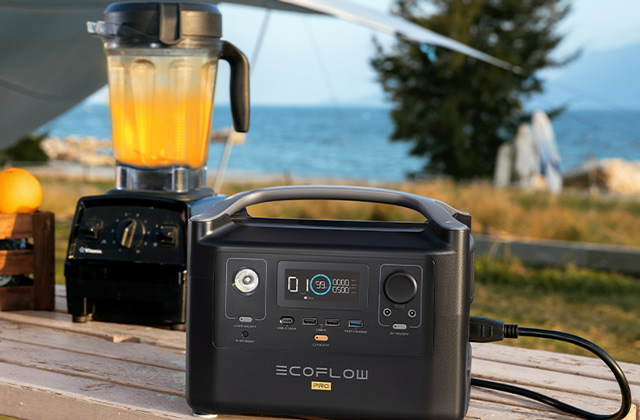What is the lifespan of an outdoor power source and how long can it be used for?
An outdoor power source is a multi-functional power source with an internal lithium-ion battery that can store its own energy, also known as a portable AC/DC power source. Outdoor power sources are like mini portable charging stations and are characterized by their light weight, high capacity, high power, long lifespan, and strong stability. So, how long is the lifespan of an outdoor power source and how long can it be used for?
The number of cycles is used to indicate the lifespan of an outdoor power source unit, with one charge + discharge cycle counting as one cycle. At present, the lifespan of a lithium-ion battery is approximately 1,500-2,000 cycles, and the capacity remains above 80% of the initial capacity. With the continuous development and progress of lithium-ion technology, the cycle life of the battery will become even longer.

For example, if the lifespan of an outdoor power source is 1,000 cycles, this means that the power source will approximately complete 1,000 cycles of charging from 0% to 100%, and then discharging to 0%. If the outdoor power source is used once a week, the estimated lifespan is about 19 years (1,000 cycles ÷ 48 times per year = approximately 20 years). If used on a daily basis, the estimated lifespan is approximately 4 years (1,000 cycles ÷ 240 times per year = approximately 4 years).
How to extend the lifespan of an outdoor power source
- Shallow charge and discharge
Shallow charge and discharge means not fully charging the battery and not fully discharging it, which is often used for outdoor power sources with lithium-ion batteries as internal cores. The purpose of shallow charging and discharging is to keep the battery in as normal an environment as possible, preventing abnormal fluctuations in individual battery cells due to overcharging and overdischarging, which could cause the battery pack to malfunction. Therefore, shallow charging and discharging is a lithium-ion battery usage method with theoretical support. In addition, from the perspective of the characteristics of lithium battery cells, shallow charge and discharge is also more in line with the normal usage condition of lithium battery cells.
- Moderate charging and discharging during idle periods
Even in the case of normal energy storage devices, there will be a certain amount of slight power consumption even when not in use. Therefore, to maintain the vitality of the battery, it is necessary to perform moderate charging and discharging after 3 to 6 months of idling to stimulate the battery to function normally. On the contrary, overcharging and overdischarging can also cause battery loss and reduce battery efficiency.
- Use the original charger for charging
Using the original charger for charging is an important common-sense issue. Matching chargers can make charging more efficient and do not affect the power load of the battery.
- Avoid using in excessively high or low temperatures
The use of batteries is restricted by the temperature range under normal circumstances, and extremely high or low temperatures can cause the battery to stop working. Conversely, the greater the working temperature range of the battery, the better the quality of the battery and the more outstanding the technical capabilities.
- Pay attention to waterproof and moisture-proof measures
Most outdoor power sources have heat dissipation vents, so they are not completely waterproof. If water enters through the vents or the power source is exposed to rain, it can easily damage the battery. Therefore, good outdoor power sources are equipped with high-quality waterproof and moisture-proof power source bags, which not only facilitate storage but also have the function of easy portability.

